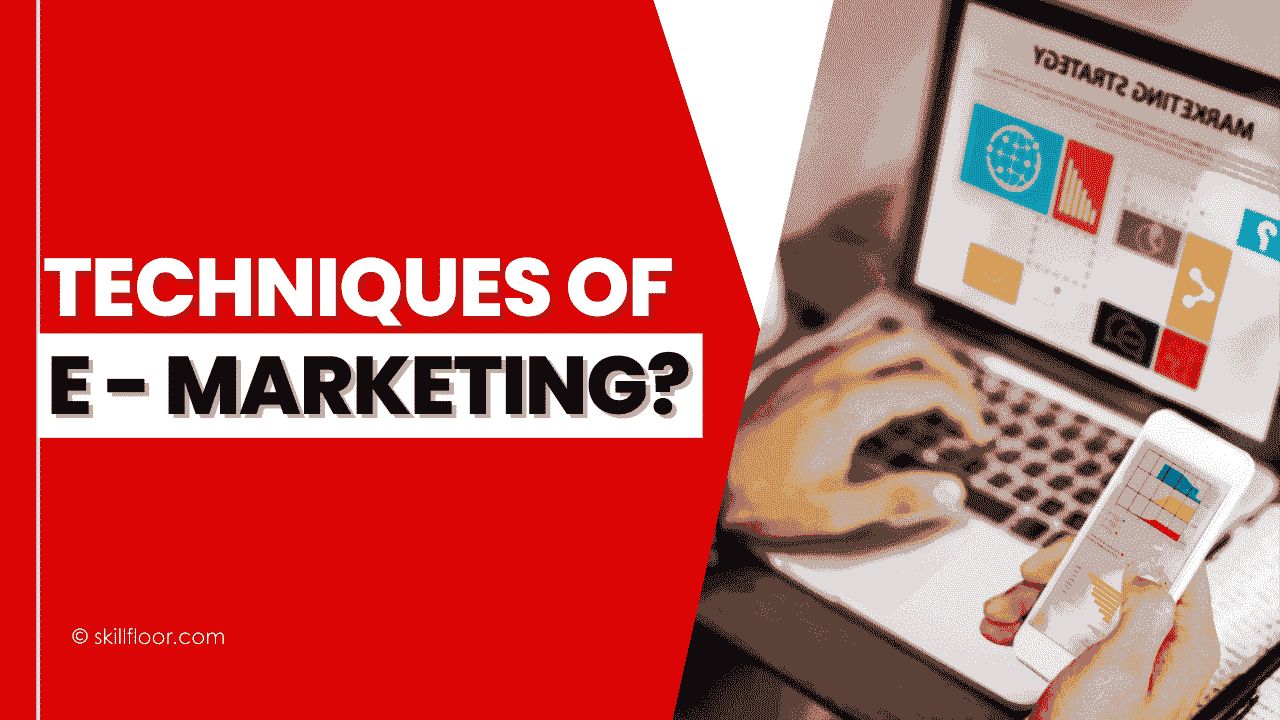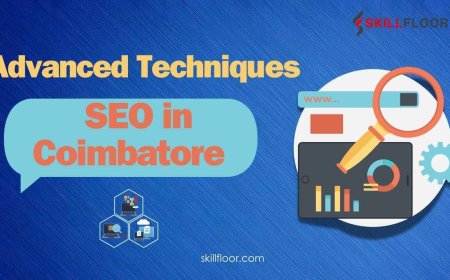What Are the Techniques of E-Marketing?
Learn essential e-marketing techniques including SEO, PPC, email marketing, and more to enhance your digital strategy and connect with your audience.

Nowadays businesses must use online strategies to effectively connect with their customers. As a digital marketing expert, I’ve seen how impactful these strategies can be when applied correctly. In this guide, I’ll walk you through essential e-marketing techniques and share practical insights on how to use them to drive your business forward. Whether you want to improve your online presence or boost sales, this guide will help you understand and implement the right strategies.
Managing Too Many Marketing Tasks
Digital marketing is full of opportunities, and I know firsthand how overcome it can be to go through them all. The real challenge isn’t just picking the right techniques of e-marketing; it’s about using them in a way that fits your business goals and connects with your audience. I’ve seen many businesses struggle with this, so let me simplify it for you: focus on understanding what your audience needs and choose the techniques of e-marketing that best align with your goals. This approach will make the process less daunting and more effective.
E-Marketing Tools and Platforms
The e-marketing field is continually changing, with new tools, platforms, and strategies emerging regularly. This constant change can make it difficult to keep up and to know which techniques of e-marketing are worth investing in. Furthermore, businesses often struggle with integrating multiple strategies cohesively and measuring their effectiveness accurately.
Given the complexity of e-marketing, what are the key techniques that every business should know about?
Let’s explore each of these techniques in detail, breaking them down into actionable insights that can help you enhance your e-marketing efforts.
1. Search Engine Optimization (SEO)
SEO is a foundational e-marketing technique aimed at improving your website’s visibility on search engines like Google. Here’s a detailed breakdown:
-
Keywords: Identify and use keywords that your target audience is searching for. This involves keyword research to find terms that are relevant and have a good search volume. Tools like Google Keyword Planner or SEMrush can help you with this.
-
On-Page SEO: Optimize your website’s pages. This includes using keywords in titles, meta descriptions, headers, and throughout your content. Proper on-page SEO also involves ensuring that your website’s URL structure is clean and that your content is high-quality and relevant.
-
Off-Page SEO: Build your site’s authority through backlinks. Secure links from reputable sites in your industry. This could involve guest blogging, partnerships, or digital PR efforts. The quality and relevance of these backlinks are crucial.
-
Technical SEO: Focus on the technical aspects of your website, such as site speed, mobile-friendliness, and secure connections (HTTPS). These factors impact how search engines crawl and index your site.

Tip: Regularly audit your SEO strategy and stay updated with search engine algorithm changes to maintain and improve your rankings.
2. Content Marketing
Content marketing is about creating and distributing valuable content to attract and retain your audience. Here’s how to do it effectively:
-
Content Creation: Develop various types of content, including blog posts, videos, infographics, and eBooks. The content should address your audience’s pain points and provide solutions or valuable information.
-
Content Strategy: Create a content calendar to plan and schedule your posts. This helps maintain consistency and ensures that you’re covering a range of topics relevant to your audience.
-
Engagement: Encourage interaction by asking questions, inviting comments, and sharing user-generated content. Engaging with your audience through your content helps build a loyal community.
Tip: Analyze content performance using metrics like page views, social shares, and time spent on the page. Adjust your strategy based on what resonates most with your audience.
3. Social Media Marketing
Social media marketing involves using platforms like Facebook, Instagram, LinkedIn, and Twitter to connect with your audience. Here’s how to make the most of it:
-
Platform Selection: Choose the platforms that align with your target audience’s preferences. For instance, Instagram is great for visual content, while LinkedIn is more suited for B2B interactions.
-
Content Posting: Share a mix of content, such as updates, promotions, and behind-the-scenes glimpses of your business. Use platform-specific features like Instagram Stories or LinkedIn Articles to engage users.
-
Community Management: Actively respond to comments, messages, and mentions. Building relationships through direct engagement fosters trust and loyalty.
Tip: Use social media analytics tools to track performance and adjust your strategy based on engagement metrics. This helps you understand what types of content and posts work best.
4. Email Marketing
Email marketing is a direct way to communicate with your audience and build relationships. Here’s a deeper dive:
-
List Building: Grow your email list by offering incentives like discounts, exclusive content, or free trials. Ensure your signup forms are easy to find and complete.
-
Segmentation: Divide your email list into segments based on demographics, purchase history, or behavior. This allows you to send more personalized and relevant messages.
-
Automation: Implement automated email sequences for various customer interactions, such as welcome emails for new subscribers or re-engagement emails for inactive customers.
Tip: Regularly test different elements of your emails, such as subject lines, images, and calls-to-action, to optimize open and click-through rates.
5. Pay-Per-Click (PPC) Advertising
PPC advertising involves paying for ad placements that drive traffic to your site. Here’s how to use it effectively:
-
Keyword Bidding: Select keywords that potential customers are likely to use when searching for products or services like yours. Bid on these keywords to have your ads displayed in search results or on other platforms.
-
Ad Creation: Craft compelling ad copy that captures attention and encourages clicks. Use strong calls to action and ensure your ads are relevant to the keywords you’re targeting.
-
Landing Pages: Design landing pages that align with your ad content and are optimized for conversions. This means having a clear call to action and minimizing distractions.
Tip: Use A/B testing to experiment with different ad copies and landing page designs. Analyze performance data to refine your PPC strategy and improve ROI.
6. Influencer Marketing
Influencer marketing leverages individuals with a significant online following to promote your brand. Here’s how to implement it:
-
Finding Influencers: Identify influencers who align with your brand values and whose followers match your target audience. Look for influencers with high engagement rates rather than just large followings.
-
Building Relationships: Develop authentic partnerships with influencers by offering them products to review, collaborating on content, or providing exclusive discounts for their followers.
-
Tracking Results: Measure the impact of influencer campaigns by tracking metrics like engagement, website traffic, and sales generated through influencer links.
Tip: Choose influencers who genuinely like your products and have a history of authentic endorsements. This enhances the credibility and effectiveness of their promotion.
7. Affiliate Marketing
Affiliate marketing involves partnering with affiliates who promote your products in exchange for a commission on sales. Here’s how to make it work:
-
Recruiting Affiliates: Find affiliates who have a relevant audience and are capable of driving traffic to your site. This could include bloggers, industry experts, or other businesses.
-
Providing Resources: Equip your affiliates with the tools they need to succeed, such as banners, promotional links, and access to performance data.
-
Performance Monitoring: Track the performance of your affiliates to ensure they’re generating quality leads or sales. Adjust commissions or support based on their performance.
Tip: Maintain strong communication with your affiliates and offer competitive commissions to keep them motivated and engaged.
8. Marketing Automation
Marketing automation streamlines repetitive tasks and enhances your marketing efforts. Here’s how to use it effectively:
-
Email Automation: Set up automated email workflows for various customer interactions, such as welcome series, cart abandonment reminders, and post-purchase follow-ups.
-
Social Media Automation: Use tools to schedule and manage social media posts, ensuring a consistent presence without manual effort.
-
Lead Scoring: Implement automation to score leads based on their behavior and engagement with your brand. This helps prioritize high-quality leads for follow-up.
Tip: Choose automation tools that integrate well with your existing systems and continuously evaluate their effectiveness to ensure they meet your needs.
9. A/B Testing
A/B testing helps you determine what works best by comparing two versions of a marketing element. Here’s how to conduct it:
-
Testing Variables: Focus on testing one variable at a time, such as a headline, image, or call-to-action. This allows you to isolate the impact of each change.
-
Analyzing Results: Use statistical analysis to determine which version performs better based on metrics like click-through rates or conversion rates.
-
Optimization: Apply insights from A/B testing to improve your marketing elements and strategies continuously.
10. Mobile Optimization
With a growing number of users accessing the internet via mobile devices, mobile optimization is crucial. Here’s how to ensure a mobile-friendly experience:
-
Responsive Design: Use responsive design techniques to make sure your website adjusts seamlessly to different screen sizes and orientations.
-
Page Speed: Optimize your site’s loading speed for mobile users by compressing images, minimizing code, and leveraging browser caching.
-
Mobile-Friendly Content: Design content that is easy to read and interact with on mobile devices, such as using larger fonts, touch-friendly buttons, and a single-column layout.
E-marketing is a powerful way to connect with customers and grow your business. By understanding and applying these key techniques—SEO, content marketing, social media, email marketing, PPC, influencer marketing, affiliate marketing, marketing automation, A/B testing, and mobile optimization—you can create effective online strategies that drive traffic, increase engagement, and boost sales. Remember, the key to successful e-marketing is to continuously learn, adapt, and refine your strategies to meet your business goals and the ever-changing digital environment.




























































